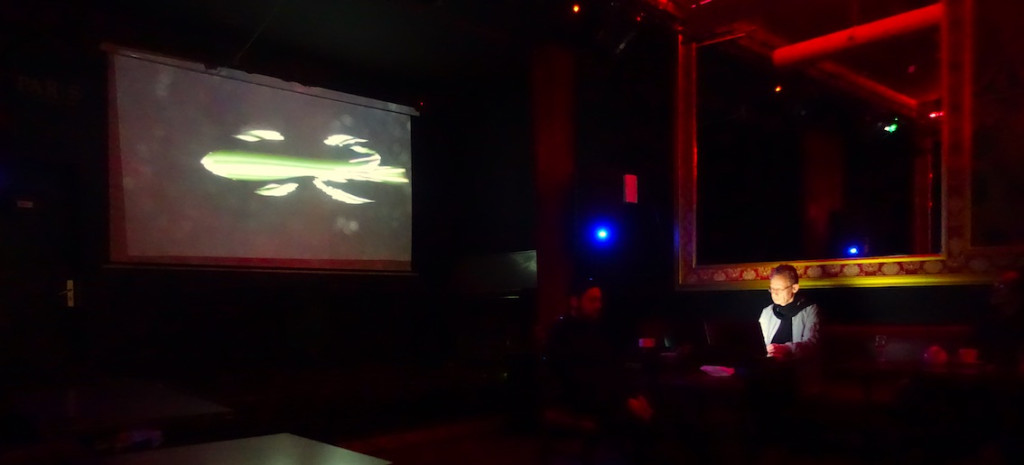In the performance “Trickster Tricking Himself” Per Huttner continues his investigation into the the relationship between the inner and outer worlds of humans. How do the processes inside the human body affect how we perceive and understand the outside world? How does the outside world impact what happens inside us?
For the performance he uses repurposed neuro-scientific technology to externalise the activity of the human brain so that its activities can be seen and heard. In other words, he creates sounds and moving images in real time using signals from another performer’s brain activities. For this purpose the Italian composer Claudio Panariello wears an EEG (electroencephalogram) cap on his/her head. The signals from the cap is sent to a computer which analyses the data and sends it on to musical digital instruments and software that generates images in real time.
The sound is slow, eerie and modulated by Panariello. Over time is grows more rhythmic and then fades back into abstraction. In the beginning of the performance the projection screen is entirely dark. Slowly a small swerving appears in the centre. Throughout the performance it grows larger and and larger. (See example below.)
Huttner, in other words, uses modern neuro-scientific technology to generate visionary art. In “Trickster Tricking Himself” he focuses on one of the most pervasive characters in mythology and folklore, the trickster. The trickster appears in stories and mythologies around the world. It often displays specific intelligence or holds secret knowledge and is often cunning, foolish or both.It uses it to play tricks or otherwise disobey rules and defy conventional behaviour, thus openly questions, disrupts or mocks authority.
Tricksters are often boundary-crossers of world-views and parallel worlds. They cross and often breaks both physical and societal rules and violate principles of social and natural order. Tricksters often disrupt normal life and then recreates it in new shapes and forms. For the performance Huttner used images of the Yuroba trickster god Eshu.
The piece was performed on November 11 at 19.30pm at Cafe de Paris. The event formed a part of the festival Transformation III.


